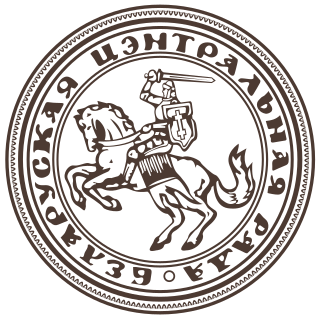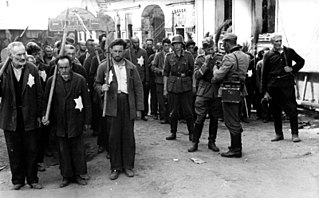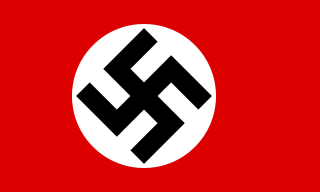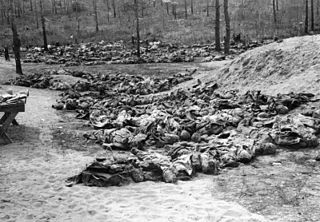 W
WByelorussia, known today as Belarus, was a republic of the Soviet Union when World War II began. The borders of Belarus were greatly expanded in the invasion of Poland of 1939 and finalised after World War II. Following the German military disasters at Stalingrad and Kursk, a collaborationist Belorussian self-government (BCR) was formed by the Germans in order to drum up local support for their anti-Soviet operations. The Belorussian BCR in turn formed the twenty-thousand strong Belarusian Home Defence (BKA), active from 23 February 1944 to 28 April 1945. Assistance was offered by the local administrative governments from the Soviet era, and prewar public organizations including the former Soviet Belarusian Youth. The country was soon overrun by the Red Army. Devastated by the war, Belarus lost significant populations and economic resources. Many battles occurred in Belarusian and neighbouring territory. Belarusians also participated in regional conflicts.
 W
WOperation Bagration was the codename for the 1944 Soviet Byelorussian Strategic Offensive Operation a military campaign fought between 22 June and 19 August 1944 in Soviet Byelorussia in the Eastern Front of World War II, just over 2 weeks after the start of Operation Overlord in the west, causing the Germans to have to fight on two major fronts at the same time. The Soviet Union destroyed 28 of 34 divisions of Army Group Centre and completely shattered the German front line. It was the biggest defeat in German military history and the fifth deadliest campaign in Europe, killing around 450,000 soldiers, while 300,000 others were cut off in the Courland Pocket.
 W
WThe Belarusian Central Council was a puppet administrative body in German-occupied Belarus during World War II. It was established by Nazi Germany within Reichskommissariat Ostland in 1943–44, following requests by collaborationist Belarusian politicians hoping to create an independent Belarusian state with German support.
 W
WThe Belarusian resistance during World War II opposed Nazi Germany from 1941 until 1944. Belarus was one of the Soviet republics occupied during Operation Barbarossa. The term Belarusian partisans may refer to Soviet-formed irregular military groups fighting Germany, but has also been used to refer to the disparate independent groups who also fought as guerrillas at the time, including Jewish groups, Polish groups, and nationalist Belarusian forces opposed to Germany.
 W
WThe Bielski partisans were a unit of Jewish partisans who rescued Jews from extermination and fought the German occupiers and their collaborators around Nowogródek (Navahrudak) and Lida in German-occupied Poland. The partisan unit was named after the Bielskis, a family of Polish Jews who organized and led the community.
 W
WBrest Fortress, formerly known as Brest-Litoŭsk Fortress, is a 19th-century fortress in Brest, Belarus. In 1965, the title "Hero Fortress" was given to the fortress to commemorate the defence of the frontier stronghold during the first week of the Operation Barbarossa when Axis forces invaded the Soviet Union on June 22, 1941. The title "Hero Fortress" corresponds to the title "Hero City" that the Presidium of the Supreme Soviet of the Soviet Union awarded to twelve Soviet cities.
 W
WBronna Góra is the name of a secluded area in present-day Belarus where mass killings of Polish Jews were carried out by Nazi Germany during World War II. The location was part of the eastern half of occupied Poland, which had been invaded by the Soviet Union in 1939 in agreement with Germany, and two years later captured by the Wehrmacht in Operation Barbarossa. It is estimated that from May 1942 until November of that year, during the most deadly phase of the Holocaust in Poland, some 50,000 Jews were murdered at Bronna Góra forest in death pits. The victims were transported there in Holocaust trains from Nazi ghettos, including from the Brześć Ghetto and the Pińsk Ghetto, and from the ghettos in the surrounding area, as well as from Reichskommissariat Ostland.
 W
WThe Brześć Ghetto or the Ghetto in Brest on the Bug, also: Brześć nad Bugiem Ghetto, and Brest-Litovsk Ghetto was a Nazi ghetto created in occupied Western Belarus in December 1941, six months after the German troops had invaded the Soviet Union in June 1941. Less than a year after the creation of the ghetto, around October 15–18, 1942, most of approximately 20,000 Jewish inhabitants of Brest (Brześć) were murdered; over 5,000 were executed locally at the Brest Fortress on the orders of Karl Eberhard Schöngarth; the rest in the secluded forest of the Bronna Góra extermination site, sent there aboard Holocaust trains under the guise of 'resettlement'.
 W
WThe Byelorussian Auxiliary Police was a collaborationist paramilitary force established in July 1941. Staffed by local inhabitants from German-occupied Byelorussia, it had similar functions to those of the German Ordnungspolizei in other occupied territories.
 W
WDuring World War II, some Belarusians collaborated with the invading Axis powers. Until the beginning of Operation Barbarossa in 1941, the territory of Belarus was under control of the Soviet Union, as the Byelorussian Soviet Socialist Republic. However, memories of the Soviet repressions in Belarus and collectivization, as well as of the polonization and discrimination of Belarusians in the Second Polish Republic were still fresh, and many people in Belarus wanted an independent Belarus. Many Belarusians chose to cooperate with the invaders in order to achieve that goal, assuming that Nazi Germany might allow them to have their own independent state after the war ended.
 W
WThe defense of Brest Fortress was the first major battle of Operation Barbarossa, the Axis invasion of the Soviet Union launched on 22 June 1941. The German Heer (army) attacked without warning, expecting to take Brest on the first day, using only infantry and artillery, but it took them a week, and only after two bombardments by the Luftwaffe. Many defenders were killed or captured.
 W
WThe Dzyatlava massacres were two consecutive mass shooting actions carried out three months apart during the Holocaust. The town of Zdzięcioł was located in the Nowogródek Voivodeship of the Second Republic prior to World War II.
 W
WElections to the People's Assemblies of Western Ukraine and Western Belorussia, which took place on October 22, 1939, were an attempt to legitimize the annexation of the Second Polish Republic by the Soviet Union following the September 17 Soviet invasion of Poland in accordance with the secret protocol of the Molotov–Ribbentrop Pact. Only one month after the eastern territories of Poland were occupied by the Red Army, the Soviet secret police and military led by the Party officials staged the local elections in an atmosphere of state terror. The referendum was rigged. The ballot envelopes were numbered and often handed over already sealed. By design, the candidates were unknown to their constituencies which were brought to the voting stations by armed militias. The results were to become the official legitimization of the Soviet takeover of what is known today as the Western Belorussia and the Western Ukraine. Consequently, both Assemblies voted for incorporation of all formerly Polish voivodeships into the Soviet Union.
 W
WThe German occupation of Byelorussia, now known as Belarus, started with Germany's invasion of the Soviet Union on 22 June 1941 and ended in August 1944 with the Soviet Operation Bagration. The western parts of the Byelorussian Soviet Socialist Republic became part of the Reichskommissariat Ostland in 1941, but in 1943 the German authorities allowed local collaborators to set up a client state, the Belarusian Central Rada, that lasted until the Soviets restablished control over the region. During the occupation, German actions led to about 1.6 million civilian deaths including 500,000 to 550,000 Jews in the Holocaust in Belarus.
 W
WCurt Gustav Friedrich Walther von Gottberg was a high-ranking Nazi official and SS commander. Beginning in October 1942, within a few years he combined the highest civil and military powers in occupied Belarus: from March 1943 as representative of the Higher SS and Police Leader for central Russia and from October 1943 as the acting Commissioner-General (Generalkommissar) of the occupied Belarus.
 W
WThe Holocaust in Belarus is the term that refers to the systematic discrimination and extermination of Jews living in the former Byelorussian Soviet Socialist Republic which was occupied by Nazi Germany after August 1941 during World War II. American historian Lucy Dawidowicz, author of The War Against the Jews estimated that 66% of the Jews residing in Byelorussian SSR died in the Holocaust, out of 375,000 Jews in Byelorussia prior to World War II according to Soviet data. By comparison, in the Baltic states about 90% of Jews were killed in the same period.
 W
WKhatyn was a village of 26 houses and 157 inhabitants in Belarus, in Lahoysk Raion, Minsk Region, 50 km away from Minsk. On 22 March 1943, almost the entire population of the village was massacred by the Schutzmannschaft Battalion 118 in retaliation for an attack on German troops by Soviet partisans. The battalion was composed of Nazi collaborators and assisted by the Dirlewanger Waffen-SS special battalion.
 W
WThe NKVD prisoner massacres were a series of mass executions of political prisoners carried out by the NKVD, the People's Commissariat for Internal Affairs of the Soviet Union, across Eastern Europe, primarily Poland, Ukraine, the Baltic states, and Bessarabia. After the start of the German invasion of the Soviet Union on June 22, 1941, the NKVD troops were supposed to evacuate political prisoners into the interior of the Soviet Union, but the hasty retreat of the Red Army, the lack of transportation and other supplies and the general disregard for legal procedures often meant that the prisoners were executed.
 W
WThe occupation of the Baltic states involved the military occupation of the three Baltic states—Estonia, Latvia and Lithuania—by the Soviet Union under the auspices of the 1939 Molotov–Ribbentrop Pact in June 1940. They were then annexed into the Soviet Union as constituent republics in August 1940, though most Western powers and nations never recognised their incorporation. On 22 June 1941, Nazi Germany attacked the Soviet Union and within weeks occupied the Baltic territories. In July 1941, the Third Reich incorporated the Baltic territory into its Reichskommissariat Ostland. As a result of the Red Army's Baltic Offensive of 1944, the Soviet Union recaptured most of the Baltic states and trapped the remaining German forces in the Courland pocket until their formal surrender in May 1945.
 W
WThe Reichskommissariat Ostland (RKO) was established by Nazi Germany in 1941 during World War II. It became the civilian occupation regime in the Baltic states and the western part of the Byelorussian Soviet Socialist Republic. German planning documents initially referred to an equivalent Reichskommissariat Baltenland. The political organization for this territory – after an initial period of military administration before its establishment – involved a German civilian administration, nominally under the authority of the Reich Ministry for the Occupied Eastern Territories led by Nazi ideologist Alfred Rosenberg, but actually controlled by the Nazi official Hinrich Lohse, its appointed Reichskommissar.
 W
WDuring World War II, Reichskommissariat Ukraine was the civilian occupation regime (Reichskommissariat) of much of Nazi German-occupied Ukraine. It was governed by the Reich Ministry for the Occupied Eastern Territories headed by Alfred Rosenberg. Between September 1941 and August 1944, the Reichskommissariat was administered by Erich Koch as the Reichskommissar. The administration's tasks included the pacification of the region and the exploitation, for German benefit, of its resources and people. Adolf Hitler issued a Führer Decree defining the administration of the newly occupied Eastern territories on 17 July 1941.
 W
WThe Skidel Revolt or Skidal Uprising was an anti-state and anti-Polish sabotage action perpetrated by the Jewish and Belarusian inhabitants of the Polish town of Skidel near Nowogródek at the onset of World War II. It started on the second day of the Soviet invasion of Poland in an attempt to assist the external attack.
 W
WThe Slutsk affair refers to the massacre of thousands of Jews and others that occurred in Slutsk, Belarus in the Soviet Union, in October 1941, near the city of Minsk while under German occupation during World War II. The perpetrators were a combination of Gestapo special forces and Lithuanian allies of the Third Reich. Nearly 4,000 Jews were murdered over a two-day period along with thousands of non-Jews.
 W
WThe Soviet invasion of Poland was a military operation by the Soviet Union without a formal declaration of war. On 17 September 1939, the Soviet Union invaded Poland from the east, sixteen days after Germany invaded Poland from the west. Subsequent military operations lasted for the following 20 days and ended on 6 October 1939 with the two-way division and annexation of the entire territory of the Second Polish Republic by Nazi Germany and the Soviet Union. This division is sometimes called the Fourth Partition of Poland. The Soviet invasion of Poland was indirectly indicated in the "secret protocol" of the Molotov–Ribbentrop Pact signed on 23 August 1939, which divided Poland into "spheres of influence" of the two powers and questioned the future existence of the Polish state. German and Soviet cooperation in the invasion of Poland has been described as co-belligerence.
 W
WIn the aftermath of the German and Soviet invasion of Poland, which took place in September 1939, the territory of Poland was divided in half between Nazi Germany and the Soviet Union. The Soviets had ceased to recognise the Polish state at the start of the invasion. Since 1939 German and Soviet officials coordinated their Poland-related policies and repressive actions. For nearly two years following the invasion, the two occupiers continued to discuss bilateral plans for dealing with the Polish resistance during Gestapo-NKVD Conferences until Germany's Operation Barbarossa against the Soviet Union, in June 1941.